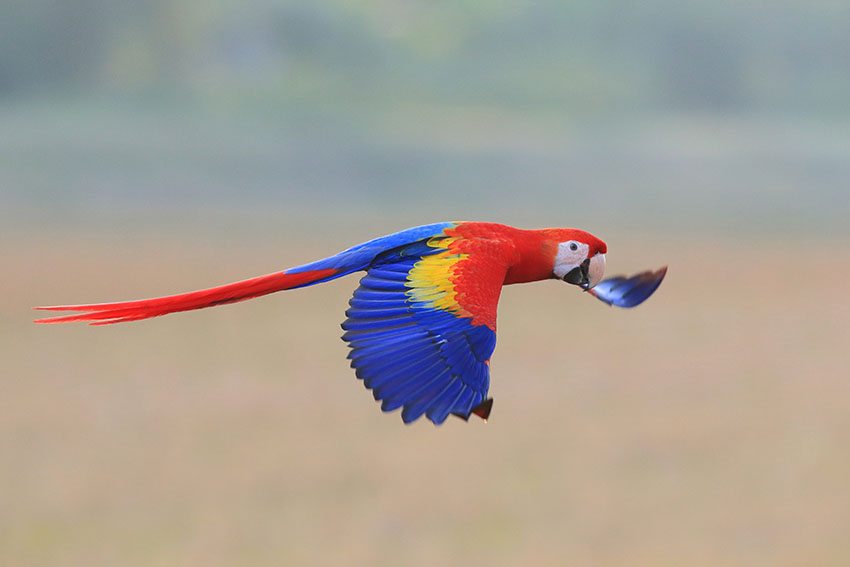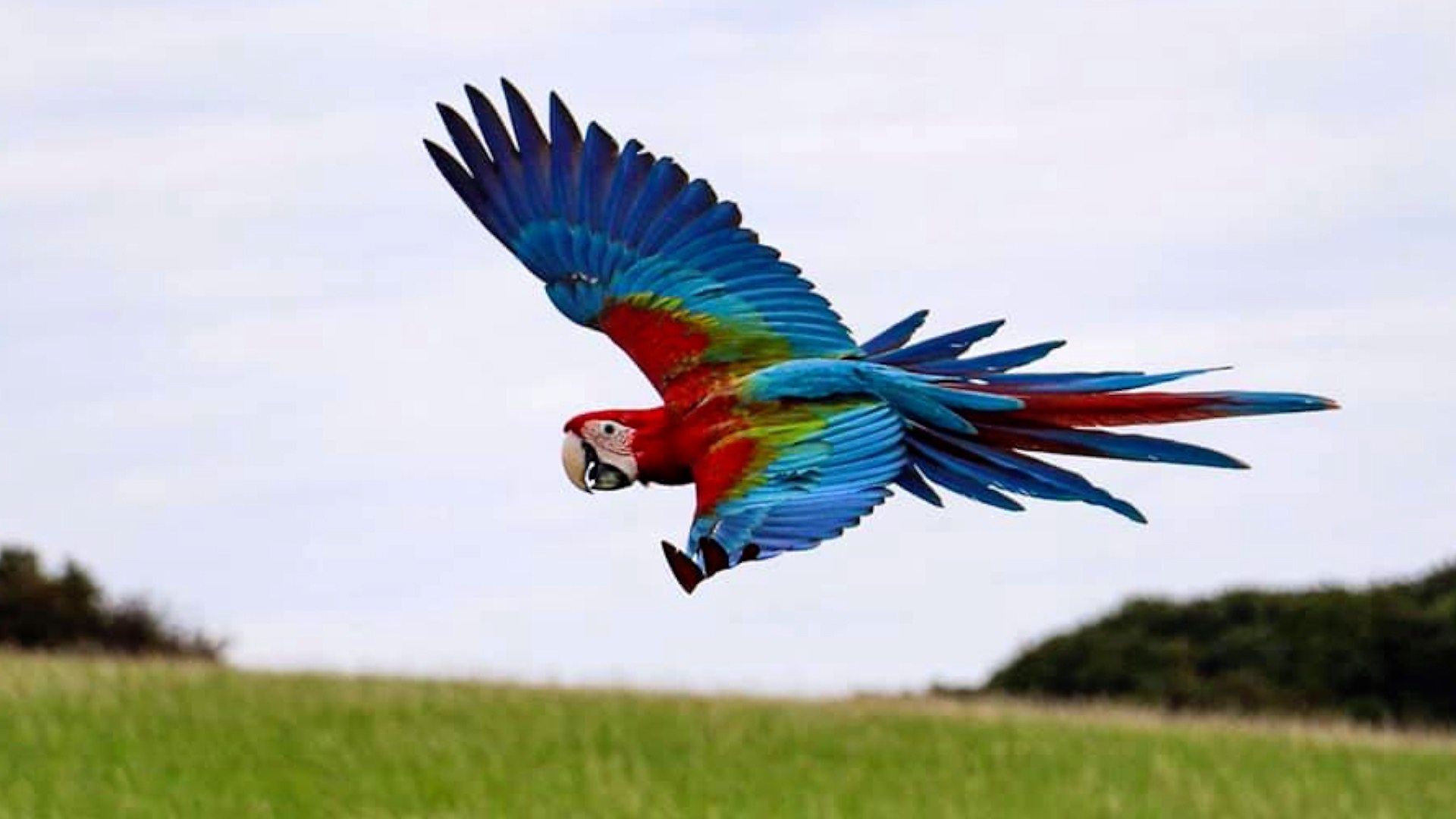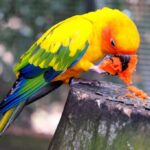Yes, a parrot can fly. Most parrot species are excellent fliers with strong, agile wings.
Parrots are known for their vibrant colors, intelligence, and ability to mimic sounds. These birds possess strong wings and a streamlined body, which make them adept fliers. Flight enables parrots to escape predators, find food, and explore their environment. Their ability to fly contributes to their survival and adaptability in various habitats.
Some parrots, like the African Grey, also use their flying skills to engage in playful activities. Understanding a parrot’s flying capabilities can help pet owners provide a more enriching environment. Flight is not just a means of transportation; it is essential for their physical and mental well-being.
Introduction To Parrot Flight
Parrots are fascinating birds with vibrant colors and unique behaviors. One of their most impressive abilities is flight. Understanding how parrots fly can help us appreciate these amazing creatures even more. Let’s explore the flight capabilities of parrots.
Parrot Species Overview
There are over 350 species of parrots. They vary in size, color, and habitat. Some popular species include:
- Macaws: Large parrots with long tails and bright colors.
- Cockatoos: Known for their crest and affectionate nature.
- African Grey Parrots: Famous for their intelligence and speaking ability.
- Budgerigars: Small parrots often kept as pets.
Flight Capabilities
Parrots are excellent fliers. Their flight abilities depend on their species and size. Here are some factors that influence their flight:
| Factor | Description |
|---|---|
| Wing Shape | Parrots have strong, curved wings for agile flight. |
| Body Weight | Lighter parrots can fly longer distances. |
| Muscle Strength | Strong chest muscles help them flap their wings powerfully. |
Parrots use their flight for various purposes. They find food, escape predators, and interact with other parrots. Flight helps them in many ways:
- Foraging: Parrots fly to locate food sources.
- Socializing: They fly to meet and interact with others.
- Escaping Danger: Flight helps them avoid predators quickly.
Each parrot species has unique flight patterns. Some species are known for their acrobatic flights. Others are known for their long-distance flying abilities. Watching a parrot fly is truly a sight to behold.
Anatomy Of Parrot Wings
Parrots are known for their vibrant colors and playful nature. Their ability to fly is a marvel of nature. To understand this, we need to look at the anatomy of parrot wings. The structure and composition of their wings play a crucial role in their flight.
Wing Structure
The wing structure of a parrot is complex and fascinating. Parrot wings have three main parts: the humerus, radius, and ulna. These bones are similar to the human arm. The humerus is attached to the body, while the radius and ulna extend outward.
Strong muscles in the chest, known as pectorals, power the wings. These muscles are essential for the flapping motion. The wing’s joints allow flexibility and range of motion. This helps parrots maneuver in the air with agility.
Feather Composition
Parrot feathers are not just for show; they are vital for flight. Feathers are made up of a central shaft called the rachis and branching structures called barbs. These barbs interlock, forming a strong and flexible surface.
There are different types of feathers on a parrot’s wing:
- Primary feathers: These are the longest feathers, found at the wing’s edge. They are crucial for generating lift and thrust.
- Secondary feathers: These are shorter and found closer to the body. They help with lift and stability.
- Coverts: These small feathers cover the base of the primary and secondary feathers. They provide smooth airflow.
Feathers are also light and strong. This combination helps parrots achieve and sustain flight. Regular preening keeps feathers in top condition.
| Feather Type | Function |
|---|---|
| Primary Feathers | Lift and Thrust |
| Secondary Feathers | Lift and Stability |
| Coverts | Smooth Airflow |
Understanding the anatomy of parrot wings reveals the beauty of nature’s design. Their wings are a perfect blend of strength, flexibility, and efficiency.
Factors Affecting Parrot Flight
Parrots are known for their beautiful colors and ability to mimic sounds. But not all parrots can fly well. Many factors can affect a parrot’s ability to fly. Understanding these factors can help ensure your parrot stays healthy and happy.
Health And Nutrition
A parrot’s health plays a crucial role in its ability to fly. Poor health can make flying difficult or impossible.
- Weight: Overweight parrots may struggle to lift off the ground.
- Feather Condition: Damaged feathers can hinder flight.
- Nutrition: A balanced diet is essential for strong muscles and feathers. Parrots need vitamins, minerals, and proteins.
- Illness: Sick parrots often lack the energy to fly.
Feeding your parrot a balanced diet is essential. Ensure they get fresh fruits, vegetables, and high-quality pellets.
Age And Development
A parrot’s age and stage of development also affect its flight abilities.
- Young Parrots: Baby parrots need time to develop their flight muscles.
- Old Parrots: Older parrots may face issues like arthritis, affecting their flight.
Young parrots may need training to learn how to fly. Older parrots should have regular check-ups to monitor their health.
| Factor | Effect on Flight |
|---|---|
| Weight | Heavy parrots struggle to lift off. |
| Feather Condition | Damaged feathers hinder flight. |
| Nutrition | Balanced diet ensures strong muscles. |
| Illness | Sick parrots lack energy to fly. |
| Age | Young and old parrots may struggle. |
Knowing these factors can help you provide the best care for your parrot.
Training And Conditioning
Training and conditioning are vital for your parrot’s ability to fly. Parrots need proper guidance and exercise to develop their flight skills. This ensures they remain healthy and happy.
Flight Training Techniques
Flight training techniques help your parrot learn to fly safely. Here are some effective methods:
- Recall Training: Teach your parrot to fly to you when called. Start with short distances and gradually increase.
- Perch-to-Perch: Encourage your parrot to fly between two perches. This helps them understand distance and direction.
- Target Training: Use a stick or your finger as a target. Reward your parrot when they fly to it.
Importance Of Exercise
Exercise is crucial for a parrot’s physical and mental well-being. Regular flight keeps their muscles strong and their mind sharp.
| Exercise Type | Benefits |
|---|---|
| Free Flight | Builds endurance and muscle strength. |
| Interactive Play | Stimulates mental activity and social skills. |
| Obstacle Courses | Improves agility and coordination. |
Keep your parrot’s training sessions short and fun. This ensures they stay engaged and motivated.
Environmental Influences
Environmental influences play a crucial role in determining whether a parrot can fly efficiently. Factors like habitat conditions and weather impacts can either enhance or hinder a parrot’s ability to soar through the skies.
Habitat Conditions
The habitat in which a parrot lives greatly affects its flying capabilities. Dense forests provide ample opportunities for parrots to practice their flying skills. Open spaces with minimal obstacles are ideal for young parrots learning to fly.
Urban areas, on the other hand, pose significant challenges. Buildings, wires, and other structures can obstruct their flight paths. This makes it difficult for them to navigate safely. Predators in their natural habitat also influence their flying behavior.
Weather Impact
Weather conditions significantly influence a parrot’s ability to fly. Strong winds can make flying difficult, even for the most experienced parrots. Rain and storms can also affect their flight, causing them to seek shelter.
Hot weather can lead to dehydration, reducing their stamina. Cold weather can make their muscles stiff, hindering their flight. Therefore, optimal weather conditions are essential for a parrot’s flight.

Credit: www.omlet.us
Common Myths About Parrot Flight
Many people believe myths about parrot flight. These myths can confuse bird owners. It’s important to understand the truth about parrot flight.
Flightless Parrot Myths
Some myths say parrots can’t fly. This is not true. Most parrots can fly very well. They use their wings to travel and find food.
- Myth: Parrots are too heavy to fly.
- Fact: Parrots have strong wings and light bones for flying.
Another myth is that all parrots prefer walking. While some enjoy walking, they still love flying. Flying helps them stay healthy and happy.
Wing Clipping Misconceptions
Many believe wing clipping is cruel. This is not always true. Wing clipping, done correctly, keeps parrots safe indoors.
It prevents them from flying into dangers, like windows or fans. It’s important to clip wings properly. Improper clipping can hurt the bird.
| Myth | Fact |
|---|---|
| Wing clipping is permanent. | Feathers grow back after clipping. |
| Clipping prevents all flight. | Clipping limits flight, not stop it. |
Some think clipped parrots can’t exercise. This is false. Clipped parrots can still play and move around.
- Ensure a safe environment for clipped birds.
- Provide toys and activities for exercise.
Understanding these myths helps in giving better care to parrots. They are amazing creatures with unique flight abilities.
Case Studies And Real-life Examples
Parrots are fascinating creatures with amazing flying abilities. Let’s explore some real-life examples and case studies that showcase their flight capabilities.
Famous Flying Parrots
Many parrots have become well-known for their exceptional flying skills. Here are some famous examples:
- Alex the African Grey: Known for his intelligence and flight skills.
- Einstein the Talking Parrot: Famous for his talking and flying abilities.
- Snowball the Cockatoo: Gained fame for his dancing and flying.
Alex the African Grey was part of many studies. He showed both cognitive skills and flight prowess. Einstein the Talking Parrot amazed people with his speech and flight. Snowball the Cockatoo entertained many with his dance moves and flying skills.
Rescue And Rehabilitation Stories
Parrots often need rescue and rehabilitation. These stories highlight their remarkable recovery:
| Parrot Name | Rescue Situation | Recovery Journey |
|---|---|---|
| Blue | Found injured in a forest | Regained flight after 6 months of care |
| Sunny | Rescued from illegal trade | Learned to fly again in a safe sanctuary |
| Kiwi | Abandoned by previous owners | Thrived and flew again with proper nutrition |
Blue was found injured and unable to fly. After 6 months of care, Blue regained the ability to fly. Sunny was saved from illegal trade and learned to fly again in a sanctuary. Kiwi was abandoned but thrived with proper nutrition and care, regaining flight.

Credit: www.bbc.com
Conclusion And Takeaways
Parrots are fascinating creatures with the ability to fly. Understanding their flying skills helps us appreciate these birds more.
Key Insights
- Parrots can fly due to their strong wing muscles.
- They have a unique wing structure that aids in flight.
- Different parrot species have varying flight abilities.
- Flight is essential for their survival and migration.
| Species | Flight Ability |
|---|---|
| African Grey | Excellent |
| Macaw | Very Good |
| Cockatoo | Good |
Future Research Directions
- Study the impact of climate change on parrot flight patterns.
- Investigate the genetic factors that influence flight ability.
- Explore the role of diet and health in maintaining flight skills.

Credit: 2pat.wordpress.com
Conclusion
Parrots are incredible creatures with impressive flying abilities. Their vibrant feathers and aerial skills captivate bird enthusiasts. Understanding their flight patterns deepens our appreciation for these intelligent birds. Observing parrots in natural habitats reveals their true flying prowess. Embrace the wonder of parrots and their fascinating ability to soar through the skies.
Ryan Everhart is a passionate bird enthusiast and blogger, primarily writing on his website, Avian Whispers. His journey into the world of bird blogging began with a deep interest in parrots, a species that captivated his attention for their intelligence and social behavior. Over time, his content expanded to cover a broader range of bird species, offering insights into bird behavior, care, habitats, and conservation.
Ryan is dedicated to educating his audience, which includes both new bird owners and seasoned enthusiasts. His writing is filled with personal experiences, expert knowledge, and practical advice on bird care. Through Avian Whispers, he aims to foster a deeper appreciation for birds, emphasizing their role in nature and the joys of having them as pets.
Starting with articles focused on parrots, Ryan’s work now encompasses a diverse range of topics such as feeding, training, habitat enrichment, and bird health. His love for birds extends beyond parrots, diving into various avian species. His informative and heartfelt writing reflects his commitment to the well-being of birds and the desire to help others connect with these creatures.
As a growing voice in the bird blogging community, Ryan strives to provide a platform where bird lovers can learn, share experiences, and connect over a shared passion for avian life. His blogs are not only educational but also serve as a reminder of the importance of protecting and nurturing the bond between humans and birds.




